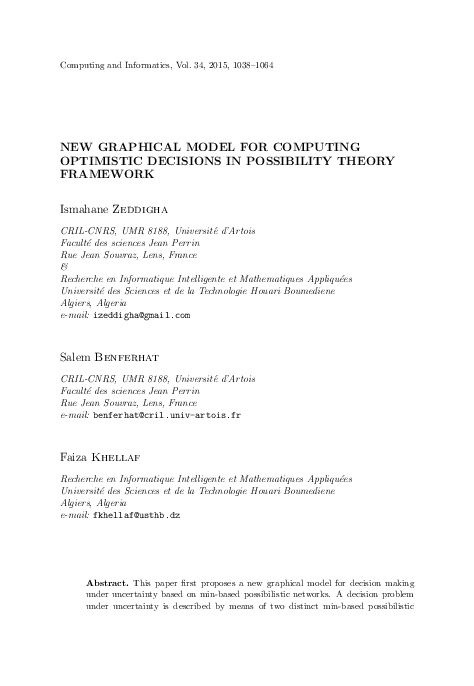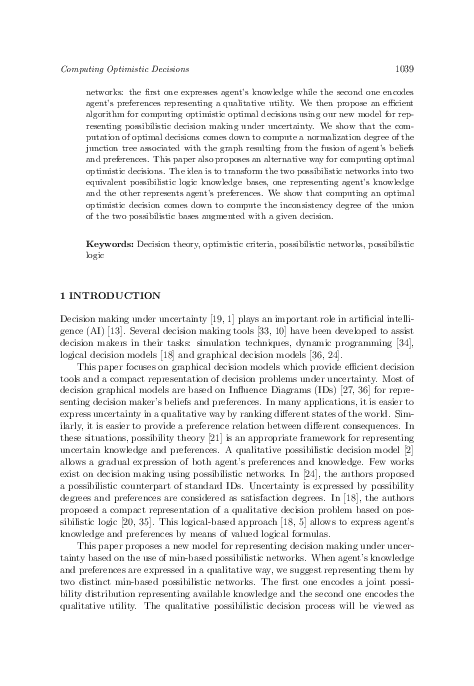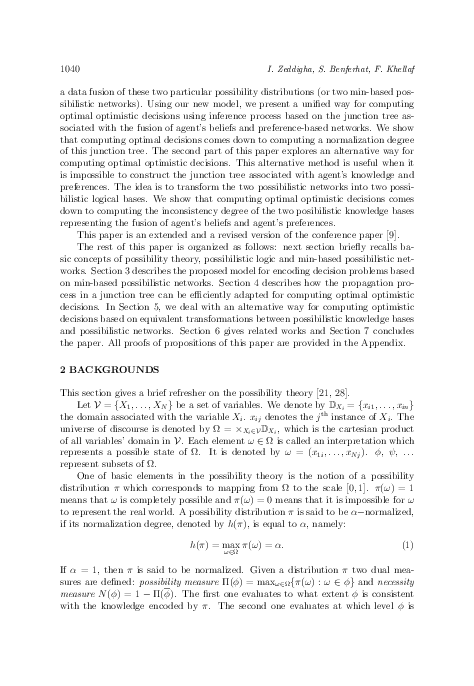New Graphical Model for Computing Optimistic Decisions in Possibility Theory Framework
keywords: Decision theory, optimistic criteria, possibilistic networks, possibilistic logic
This paper first proposes a new graphical model for decision making under uncertainty based on min-based possibilistic networks. A decision problem under uncertainty is described by means of two distinct min-based possibilistic networks: the first one expresses agent's knowledge while the second one encodes agent's preferences representing a qualitative utility. We then propose an efficient algorithm for computing optimistic optimal decisions using our new model for representing possibilistic decision making under uncertainty. We show that the computation of optimal decisions comes down to compute a normalization degree of the junction tree associated with the graph resulting from the fusion of agent's beliefs and preferences. This paper also proposes an alternative way for computing optimal optimistic decisions. The idea is to transform the two possibilistic networks into two equivalent possibilistic logic knowledge bases, one representing agent's knowledge and the other represents agent's preferences. We show that computing an optimal optimistic decision comes down to compute the inconsistency degree of the union of the two possibilistic bases augmented with a given decision.
reference: Vol. 34, 2015, No. 5, pp. 1038–1064


